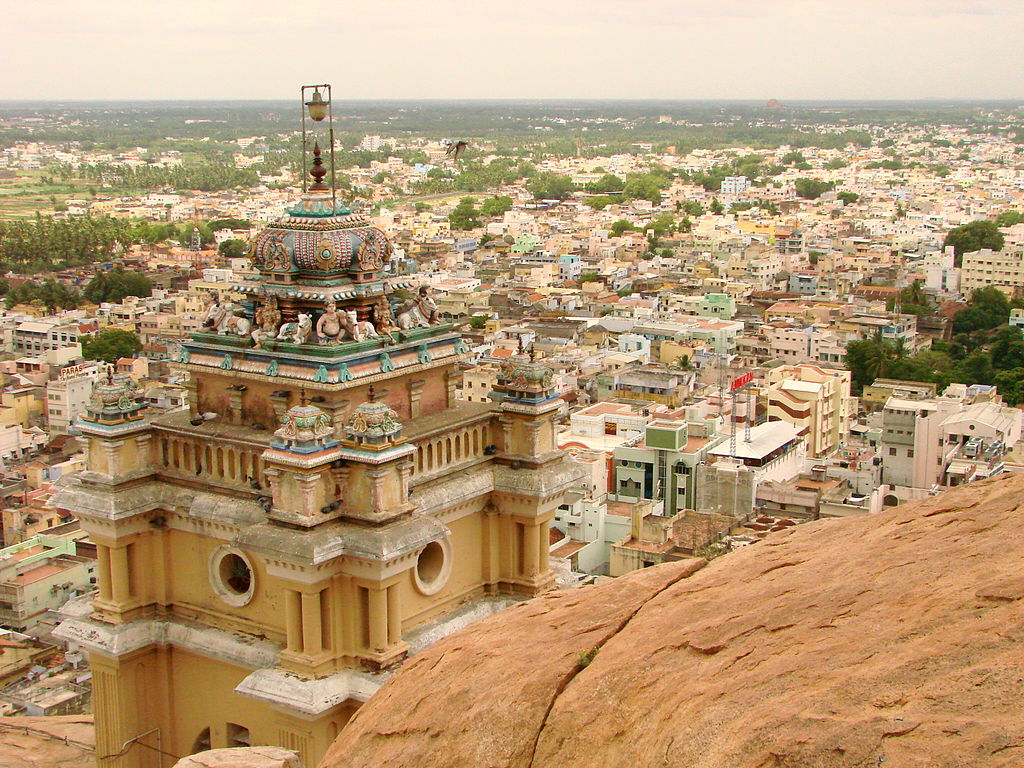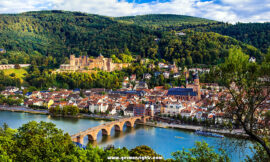Tiruchirappalli, commonly known as Trichy, is a city steeped in history, culture, and religious significance, situated in the southern Indian state of Tamil Nadu. Nestled on the banks of the Kaveri River, Trichy has evolved from being a prominent Chola dynasty stronghold to a bustling urban center with a rich tapestry of tradition and modernity.
The city’s most iconic landmark is the Rockfort Temple, perched on a massive rock formation that rises abruptly from the plains. Comprising two ancient temples, the Ucchi Pillayar Temple at the top and the Thayumanavar Temple at the base, the Rockfort Temple complex is a significant pilgrimage site and a testament to the architectural prowess of the Chola dynasty. The climb to the top involves ascending a series of steep steps, offering panoramic views of Trichy and its surroundings.
The Sri Ranganathaswamy Temple, situated on an island in the Kaveri River in the nearby town of Srirangam, is one of the most revered temples in South India. Dedicated to Lord Ranganatha, a form of Lord Vishnu, this temple is a vast complex with intricate carvings, colorful gopurams (entrance towers), and several enclosures. The temple’s annual festival, Vaikunta Ekadashi, attracts pilgrims and devotees from far and wide, turning the temple town into a vibrant center of religious celebrations.
Trichy is also home to the Jambukeswarar Temple, one of the five major Shiva temples of Tamil Nadu. This ancient temple, dedicated to Lord Shiva, is renowned for its unique feature—an underground water stream that flows continuously in the sanctum sanctorum. The temple’s architecture, adorned with intricate sculptures, reflects the Dravidian style that characterizes many of Tamil Nadu’s religious structures.
The city’s historical significance is further underscored by the presence of the Rani Mangammal Mahal, a palace named after the courageous queen who ruled the region in the 18th century. The palace, with its architectural grandeur and regal charm, serves as a testimony to Trichy’s rich past.
The Teppakulam tank, located near the Rockfort Temple, is an ancient water reservoir with a central island housing a temple dedicated to Lord Vinayaka (Ganesha). The tank is surrounded by a mandapam (hall) and is a serene spot, particularly during the float festival when idols of deities are placed on floating rafts adorned with lights and flowers.
The city’s modern identity is shaped by its educational institutions, with the National Institute of Technology (NIT Trichy) being one of the premier engineering colleges in India. The city also hosts the Bharathidasan University, contributing to Trichy’s status as an educational hub in the region.
Trichy’s vibrant markets and bazaars, such as the Chinnar Bazaar and Gandhi Market, offer a kaleidoscope of colors and a variety of goods. From traditional silk sarees to local crafts and spices, these markets provide a glimpse into the region’s commercial and cultural vibrancy.
The cuisine of Trichy is a delightful mix of traditional Tamil flavors and culinary influences from various communities. The city is known for its aromatic filter coffee, spicy Chettinad cuisine, and delectable sweets. Eating at local eateries and exploring the street food scene is a must for those looking to savor the authentic taste of Trichy.
In conclusion, Tiruchirappalli, with its ancient temples, historical landmarks, and vibrant culture, is a city that seamlessly blends its rich heritage with the dynamism of modern life. Whether climbing the Rockfort Temple for spiritual solace, exploring the grandeur of Ranganathaswamy Temple, or immersing oneself in the local markets and culinary delights, Trichy invites visitors to experience the diversity and richness of Tamil Nadu’s cultural mosaic.



